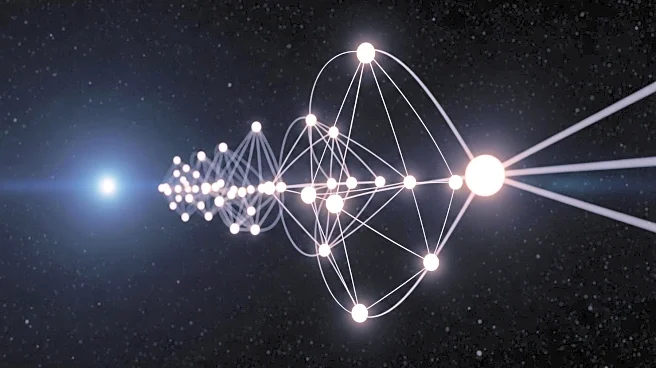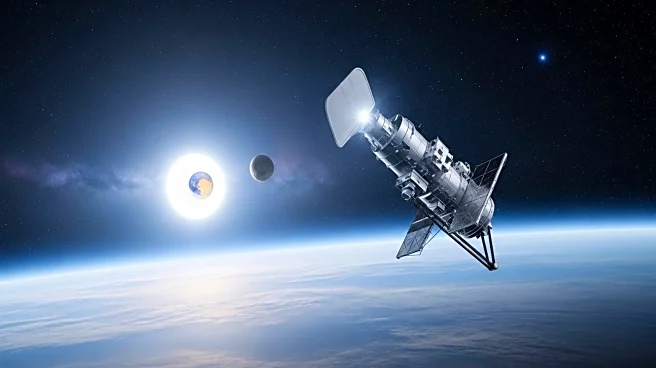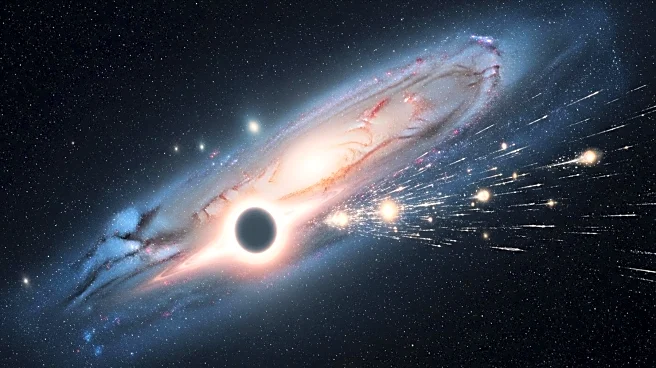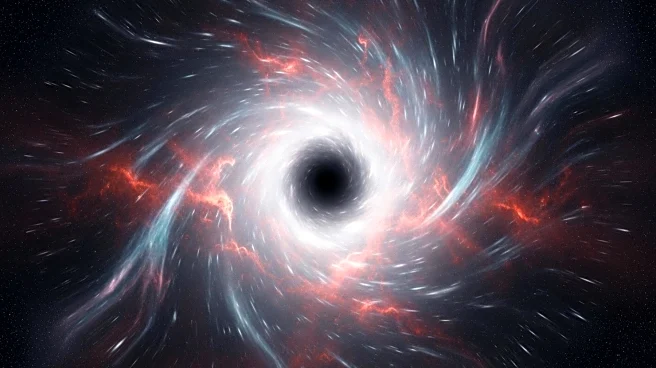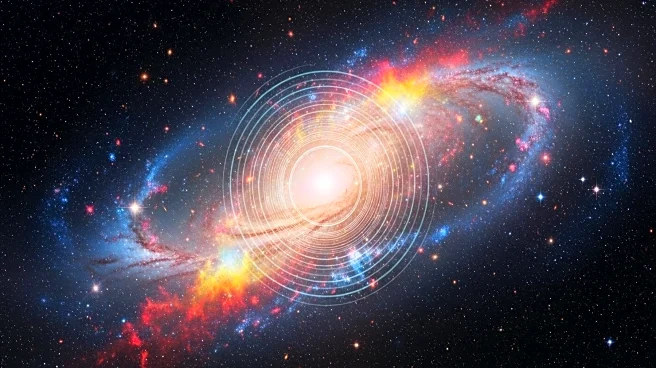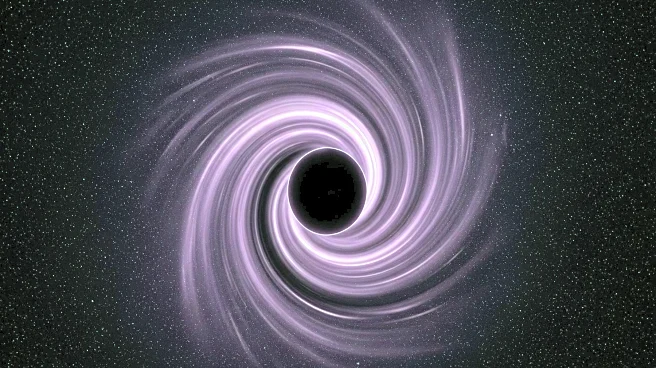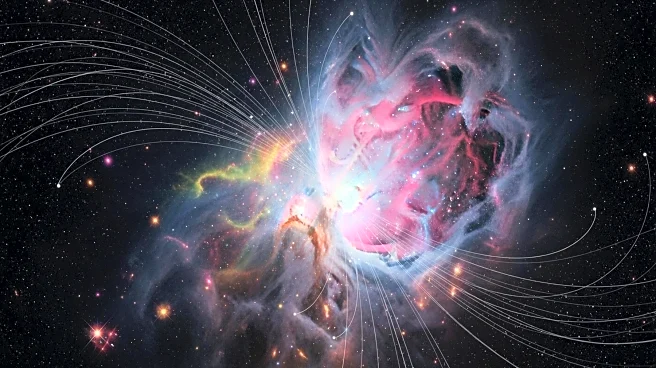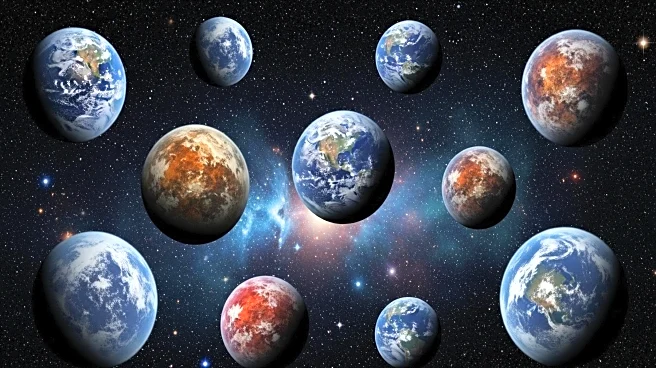What's Happening?
Astronomers have identified a mysterious object in the deep sky that may be a primordial black hole, based on observations from the James Webb Space Telescope. This discovery challenges the conventional understanding that stars were the first large structures to form after the Big Bang, suggesting that black holes might have appeared earlier. The object is located beyond the most ancient galaxies, and its characteristics differ from typical black holes formed from collapsed stars, as it is surrounded by hydrogen and helium from the Big Bang.
Why It's Important?
If confirmed, the existence of a primordial black hole could revolutionize our understanding of the universe's evolution, requiring a reevaluation of cosmological models. This discovery could provide insights into the conditions of the early universe and the processes that led to the formation of cosmic structures. It also highlights the capabilities of the James Webb Space Telescope in exploring distant and ancient cosmic phenomena, potentially leading to further groundbreaking discoveries.
What's Next?
Further observations and analyses are needed to confirm the nature of the object. Astronomers may require larger telescopes and more advanced technology to gather definitive evidence. The scientific community will likely engage in debates and discussions to interpret the findings, which could lead to new theories about the universe's formation and the role of black holes in cosmic evolution.
Beyond the Headlines
The discovery of a primordial black hole could have philosophical implications, challenging our understanding of time and the fundamental laws of physics. It may also inspire new technological advancements in telescope design and data analysis, as scientists strive to explore the universe's most distant reaches. Additionally, this finding could influence future space missions aimed at studying the early universe.

